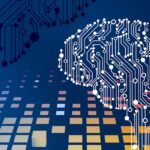Neurodiversity is a concept that recognizes and values the wide range of neurological variations among individuals. This perspective posits that conditions such as autism, ADHD, dyslexia, and others are not merely disorders to be treated or cured but rather natural variations of the human brain. The neurodiversity movement advocates for acceptance and inclusion, emphasizing that these differences can contribute positively to society.
By understanding neurodiversity, educators, parents, and peers can foster environments that celebrate individual strengths rather than focusing solely on challenges. The roots of neurodiversity can be traced back to the disability rights movement, which sought to shift societal perceptions of disability from a medical model—where the focus is on deficits and treatment—to a social model that emphasizes acceptance and accommodation. This shift has profound implications for education, as it encourages the development of teaching strategies that recognize diverse learning styles and cognitive processes.
By embracing neurodiversity, educational institutions can create more inclusive classrooms that cater to the unique needs of all students, allowing them to thrive academically and socially.
Challenges Faced by Neurodiverse Learners
Neurodiverse learners often encounter a myriad of challenges in traditional educational settings. One significant hurdle is the one-size-fits-all approach to teaching, which can overlook the unique learning styles and needs of these students. For instance, a student with dyslexia may struggle with reading comprehension in a classroom where the primary mode of instruction relies heavily on written materials.
Similarly, a student with autism may find it difficult to navigate social interactions during group activities, leading to feelings of isolation or anxiety. These challenges can hinder academic performance and overall well-being. Moreover, neurodiverse learners frequently face stigma and misunderstanding from peers and educators alike.
Misconceptions about their abilities can lead to lowered expectations, which can further exacerbate feelings of inadequacy. For example, a child with ADHD may be perceived as lazy or unmotivated when, in reality, they may simply require different strategies to focus and engage with the material. This lack of understanding can create a negative feedback loop, where students internalize these misconceptions and develop a diminished sense of self-worth.
Benefits of Adaptive AI Solutions
Adaptive AI solutions offer promising avenues for addressing the unique needs of neurodiverse learners. These technologies leverage machine learning algorithms to tailor educational experiences based on individual learning patterns and preferences. By analyzing data on student performance, engagement levels, and learning styles, adaptive AI can provide personalized content that aligns with each learner’s strengths and challenges.
This customization not only enhances academic outcomes but also fosters a sense of agency among students. One of the key benefits of adaptive AI is its ability to provide real-time feedback. Traditional assessment methods often fail to capture the nuances of a student’s understanding or progress.
In contrast, adaptive AI systems can continuously monitor student interactions and adjust instructional strategies accordingly. For instance, if a student struggles with a particular math concept, the AI can offer additional practice problems or alternative explanations until mastery is achieved. This immediate responsiveness helps maintain student motivation and encourages a growth mindset.
How Adaptive AI Solutions Support Neurodiverse Learners
Adaptive AI solutions are particularly well-suited to support neurodiverse learners by providing tailored educational experiences that accommodate their diverse needs. For example, students with autism may benefit from visual learning tools that break down complex concepts into manageable visual representations. An adaptive AI platform could present information through infographics or interactive simulations, allowing these learners to engage with content in a way that resonates with their cognitive processing styles.
Additionally, adaptive AI can facilitate differentiated instruction by offering multiple pathways for students to demonstrate their understanding. A neurodiverse learner might excel in verbal communication but struggle with written assignments. An adaptive AI system could allow this student to express their knowledge through oral presentations or multimedia projects instead of traditional essays.
By providing various options for assessment, adaptive AI empowers students to showcase their strengths while minimizing frustration associated with conventional evaluation methods.
Personalized Learning with Adaptive AI
Personalized learning is at the heart of adaptive AI solutions, enabling educators to create customized educational experiences that cater to individual student needs. Through data-driven insights, these systems can identify specific areas where a student may require additional support or enrichment. For instance, if a learner demonstrates proficiency in basic math skills but struggles with word problems, the adaptive AI can adjust its curriculum to focus on developing problem-solving strategies tailored to that student’s learning style.
Moreover, personalized learning fosters greater engagement among neurodiverse learners by allowing them to progress at their own pace.
Adaptive AI systems can provide scaffolding and gradual increases in complexity, ensuring that students build a solid foundation before moving on to more advanced topics.
This individualized approach not only enhances academic performance but also cultivates a love for learning.
Building Confidence and Independence
One of the most significant advantages of implementing adaptive AI solutions in education is their potential to build confidence and independence among neurodiverse learners. By providing personalized support and recognizing individual achievements, these systems empower students to take ownership of their learning journeys.
Furthermore, adaptive AI solutions encourage self-directed learning by equipping students with tools and resources that promote autonomy. For instance, learners can access interactive modules or practice exercises independently, allowing them to explore topics of interest without constant supervision. This independence fosters critical thinking skills and encourages students to seek out knowledge beyond the confines of traditional classroom instruction.
As they become more confident in their abilities, neurodiverse learners are more likely to advocate for themselves and pursue their academic goals with determination.
Addressing Sensory Sensitivities
Many neurodiverse learners experience sensory sensitivities that can significantly impact their ability to focus and engage in traditional classroom environments. For example, students with autism may be overwhelmed by bright lights, loud noises, or crowded spaces, leading to heightened anxiety and difficulty concentrating on tasks. Adaptive AI solutions can help mitigate these challenges by offering flexible learning environments that accommodate sensory needs.
For instance, an adaptive AI platform could provide options for students to customize their learning spaces by adjusting visual displays or incorporating calming background sounds. Additionally, these systems can offer alternative formats for content delivery that minimize sensory overload. By creating an environment that respects individual sensory preferences, adaptive AI solutions enable neurodiverse learners to thrive academically while feeling comfortable and supported.
Enhancing Communication and Social Skills
Communication and social skills are often areas of difficulty for neurodiverse learners, particularly those on the autism spectrum. Adaptive AI solutions can play a crucial role in enhancing these skills by providing targeted interventions and practice opportunities in a safe and controlled environment. For example, virtual simulations powered by adaptive AI can create realistic social scenarios where students can practice conversational skills without the pressure of real-world interactions.
Moreover, these systems can offer immediate feedback on communication attempts, helping learners refine their social skills over time. By analyzing verbal and non-verbal cues during interactions, adaptive AI can provide insights into effective communication strategies tailored to each student’s unique profile. This targeted support not only improves social competence but also fosters meaningful connections with peers.
Tracking Progress and Providing Feedback
Effective tracking of progress is essential for supporting neurodiverse learners in their educational journeys. Adaptive AI solutions excel in this area by continuously monitoring student performance and engagement levels across various tasks and activities. This data-driven approach allows educators to gain valuable insights into each learner’s strengths and areas for improvement.
In addition to tracking progress, adaptive AI systems provide timely feedback that is crucial for fostering growth and motivation. Instead of waiting for periodic assessments or report cards, students receive immediate responses to their efforts, reinforcing positive behaviors and guiding them toward areas needing attention. For instance, if a student consistently struggles with a particular skill, the adaptive AI can suggest targeted resources or exercises designed to address those specific challenges.
This ongoing feedback loop creates an environment where learners feel supported in their growth while also encouraging them to take an active role in their education.
Overcoming Learning Barriers
Neurodiverse learners often face significant barriers in traditional educational settings due to rigid curricula and standardized assessment methods that do not account for individual differences in learning styles. Adaptive AI solutions are designed to break down these barriers by offering flexible pathways for learning that cater to diverse cognitive profiles. For example, a student who struggles with reading comprehension might benefit from audio versions of texts or interactive storytelling applications that enhance understanding through multimodal engagement.
Furthermore, adaptive AI systems can identify specific learning barriers through data analysis and adjust instructional strategies accordingly. If a learner demonstrates difficulty grasping mathematical concepts through traditional methods, the system might introduce gamified learning experiences that make abstract ideas more tangible and relatable. By addressing these barriers head-on, adaptive AI empowers neurodiverse learners to overcome obstacles that may have previously hindered their academic success.
Implementing Adaptive AI in Educational Settings
The successful implementation of adaptive AI solutions in educational settings requires careful planning and collaboration among educators, administrators, and technology developers. Training teachers on how to effectively integrate these tools into their classrooms is essential for maximizing their potential benefits. Educators must understand how to interpret data generated by adaptive AI systems and use it to inform instructional decisions tailored to individual student needs.
Additionally, fostering an inclusive school culture that embraces neurodiversity is crucial for creating an environment where adaptive AI solutions can thrive. Schools should prioritize professional development opportunities focused on understanding neurodiversity and implementing best practices for supporting diverse learners. By cultivating awareness among staff members and promoting collaboration between general education and special education teams, schools can create a cohesive approach that leverages adaptive AI technologies effectively.
In conclusion, the integration of adaptive AI solutions into educational settings holds immense promise for supporting neurodiverse learners by providing personalized experiences that cater to their unique needs while fostering confidence and independence in their learning journeys.









